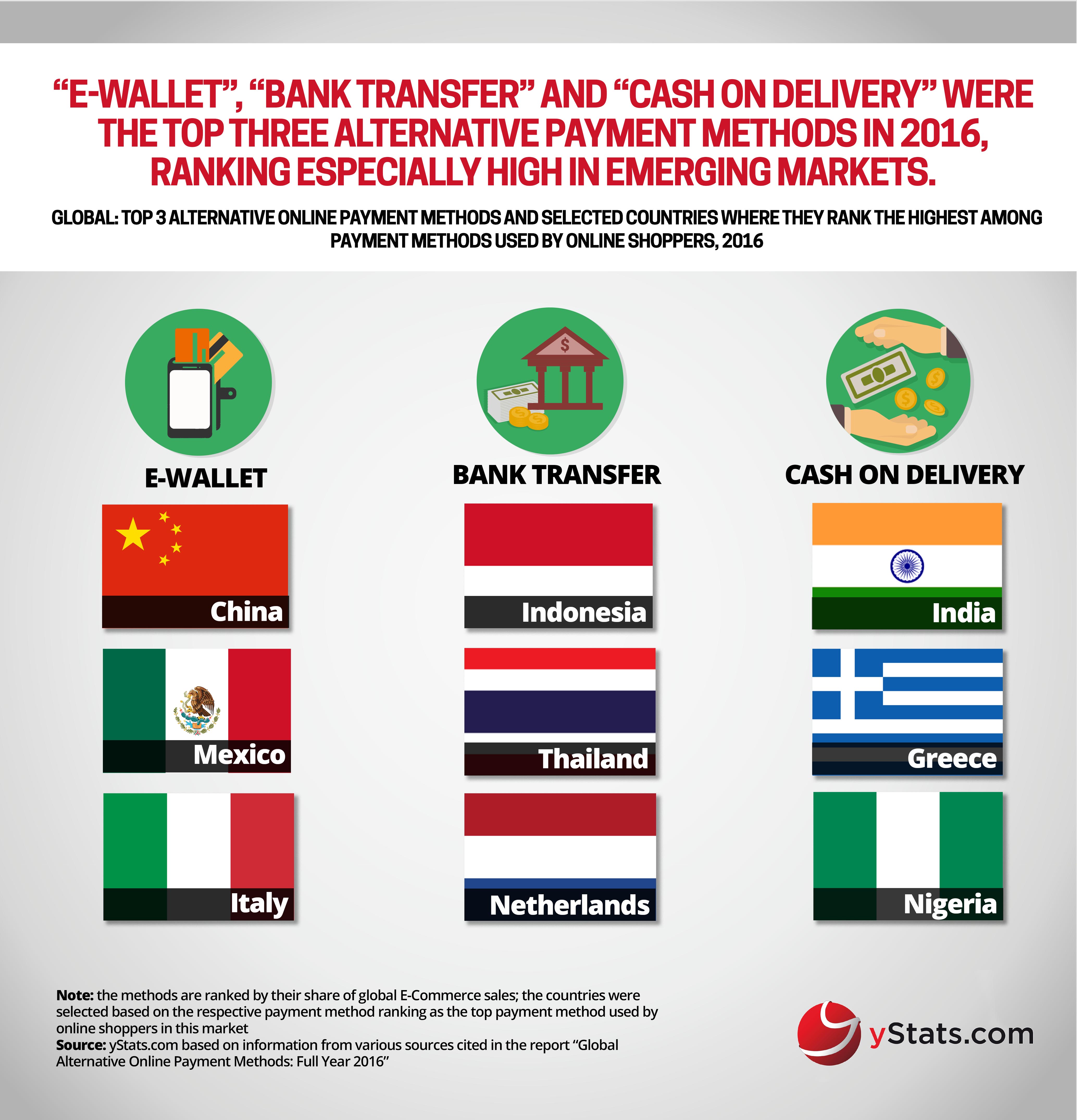“Global Alternative Online Payment Methods: Full Year 2016” is a new market report published by yStats.com, a Germany-based secondary market research firm specialized in global E-Commerce and Online Payments market intelligence. The report summarizes market statistics, forecasts and trends from third-party sources published during 2016 and concludes that on the global scale, alternative payment methods exceed the traditional online payment by credit card. Online payment method rankings from more than 25 countries in different regions are included in this report.
In spite of credit card being used by more than 50% of online shoppers worldwide, over one-half of global E-Commerce is now done with payment methods other than bank cards. This is a key finding from the new report by yStats.com. Through 2020, the share of alternative payment methods in worldwide online retail sales is projected to climb higher, while that of credit and debit cards continues to fall.
Especially in emerging markets, alternative payment methods are preferred over credit cards. China is one example: digital payment services like Alipay account for over 50% of E-Commerce sales in this major market. In Southeast Asia, payment by bank transfer is the leading method in Indonesia and Thailand and ranks second after cash on delivery in Vietnam, per the yStats.com report. Cash on delivery is also a popular method among online shoppers in selected Latin American, Eastern European, Middle Eastern and African countries, where banking penetration is not as high as in advanced economies.
Credit card continues to lead in shoppers’ preference when purchasing online in many advanced markets, including the USA, Canada, Japan, South Korea, the UK, and Sweden. Nevertheless, there are a few exceptions within this advanced market group, as alternative payment methods rank above card payments in Germany and the Netherlands, for example.
Overall, online merchants seem to have grasped the necessity of offering multiple payment options to suit the varying consumers’ preferences. According to a 2016 survey cited in yStats.com’s publication, two-thirds of them accept at least 3 different payment means from global online shoppers.



